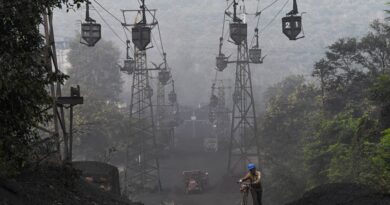The Federal Reserve may not hike interest rates next week, but consumers are unlikely to feel any relief
[ad_1]
Credit card rates top 20%
Most credit cards come with a variable rate, which has a direct connection to the Fed’s benchmark rate.
After the previous rate hikes, the average credit card rate is now more than 20% — an all-time high. Further, with most people feeling strained by higher prices, balances are higher and more cardholders are carrying debt from month to month.
Even without a rate hike, APRs may continue to rise, according to according to Matt Schulz, chief credit analyst at LendingTree. “The truth is that today’s credit card rates are the highest they’ve been in decades, and they’re almost certainly going to keep creeping higher in the next few months.”
Mortgage rates are at 8%
Although 15-year and 30-year mortgage rates are fixed, and tied to Treasury yields and the economy, anyone shopping for a new home has lost considerable purchasing power, partly because of inflation and the Fed’s policy moves.
The average rate for a 30-year, fixed-rate mortgage is up to 8%, the highest in 23 years, according to Bankrate.
“Rates have risen two full percentage points in 2023 alone,” said Sam Khater, Freddie Mac’s chief economist. “Purchase activity has slowed to a virtual standstill, affordability remains a significant hurdle for many and the only way to address it is lower rates and greater inventory.”
Adjustable-rate mortgages, or ARMs, and home equity lines of credit, or HELOCs, are pegged to the prime rate. As the federal funds rate rose, the prime rate did too, and these rates followed suit.
Now, the average rate for a HELOC is near 9%, the highest in over 20 years, according to Bankrate.
Auto loan rates top 7%
Federal student loans are now at 5.5%
Federal student loan rates are also fixed, so most borrowers aren’t immediately affected by the Fed’s moves. But undergraduate students who take out new direct federal student loans are now paying 5.50% — up from 4.99% in the 2022-23 academic year and 3.73% in 2021-22.
For those with existing debt, interest is now accruing again, putting an end to the pandemic-era pause on the bills that had been in effect since March 2020.
So far, the transition back to payments is proving painful for many borrowers.
Private student loans tend to have a variable rate tied to the prime, Treasury bill or another rate index, which means those borrowers are already paying more in interest. How much more, however, varies with the benchmark.
Deposit rates at some banks are up to 5%
“Borrowers are being squeezed but the flipside is that savers are benefiting,” said Greg McBride, chief financial analyst at Bankrate.com.
While the Fed has no direct influence on deposit rates, the yields tend to be correlated to changes in the target federal funds rate. The savings account rates at some of the largest retail banks, which were near rock bottom during most of the Covid pandemic, are currently up to 0.46%, on average, according to the Federal Deposit Insurance Corp.
However, top-yielding online savings account rates are now paying over 5%, according to Bankrate, which is the most savers have been able to earn in nearly two decades.
“Moving your money to a high-yield savings account is the easiest money you are ever going to make,” McBride said.
[ad_2]
Source link



